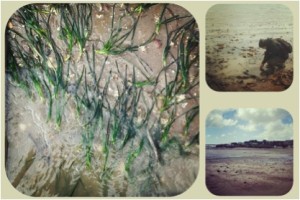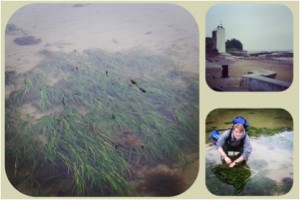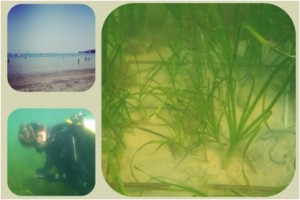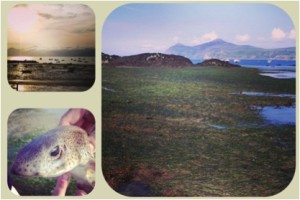Every so often, we feature a seagrass meadow from around the world. This week, we were lucky enough to hear from Benjamin Jones who’ll be reporting from several seagrass meadows all over the United Kingdom. Ben is an MRes student at Swansea University where he is part of the Seagrass Ecosystem Research Group (www.seagrass.org.uk) and a founding member of Project Seagrass (www.project-seagrass.co.uk).
——————————————————————
Photos & Text by Ben Jones
Over the past 6 months or so, I’ve been out and about around the UK carrying out sample collection for my research project. This involves investigating the role and use of Zostera marina as a biological indicator. The work is being carried out in fulfilment of an MRes degree at Swansea University in collaboration with the Seagrass Ecosystem Research Group.
My project is involves examining the health status of seagrass meadows over a gradient of human induced impacts, with specificity to elevated nutrients and eutrophication. Through collaborations with Seasearch divers, various wildlife trusts as well as research bodies, I have been fortunate enough to visit a number of seagrass meadows around the UK for this research. As a result, the number of locations that have been included in project has steadily risen.

The first seagrass meadow I sampled was located at Gelliswick Bay, Wales. This allowed me to get to grips, so to speak, with my methodology, so that I could refine it for future sites. This first sample collection also gave me a bit of a test as to where the seagrass was, which I finally managed to find after an extremely low tide exposed its outer edge. With a good idea of the location and nature of this meadow, I decided to continue sampling at this site for a separate temporal study.  After much red tape and requests for a licence, I was given permission to sample on the Isle of Wight in collaboration with Hampshire and Isle of Wight Wildlife trust who were carrying out mapping for their Solent Seagrass Project. However, this did involve a 3 a.m. start. The joys of working around the tides!
After much red tape and requests for a licence, I was given permission to sample on the Isle of Wight in collaboration with Hampshire and Isle of Wight Wildlife trust who were carrying out mapping for their Solent Seagrass Project. However, this did involve a 3 a.m. start. The joys of working around the tides!
With samples being collected from Gelliswick Bay, Skomer Marine Nature Reserve and Porthdinllaen in Wales, Studland Bay, Southend-on-Sea and Helford River in England, the Isle of Man, the Isles of Scilly, the Isle of Wight and Strangford Lough in Northern Ireland, I’ve tried to include as many sites along a gradient of anthropogenic impacts as possible, with Gelliswick Bay and Southend-on-Sea being at the higher end of the scale and Skomer Marine Nature Reserve and the Isles of Scilly at the lower end. 
At each of the sites a number of morphological measurements were taken to assess the habitat and to form the basis of my data. These measurements were shoot density, percentage cover, leaf length, leaf width and number of leaves per shoot. By using these measurements coupled with leaf tissue C, N, N15 and P contents, which is being analysed by IBERS at Aberyswyth University, we hope that it will provide a good level of understanding into the availability of nutrients to the seagrass in the locations we have studied, and for the first time provide a quantitative understanding as to the actual, rather than perceived, risk of the seagrasses to these elevated nutrients.
The next couple of months will be spent sorting through the rest of my samples and finishing of my project, hopefully with some good results to report back with so watch this space.
